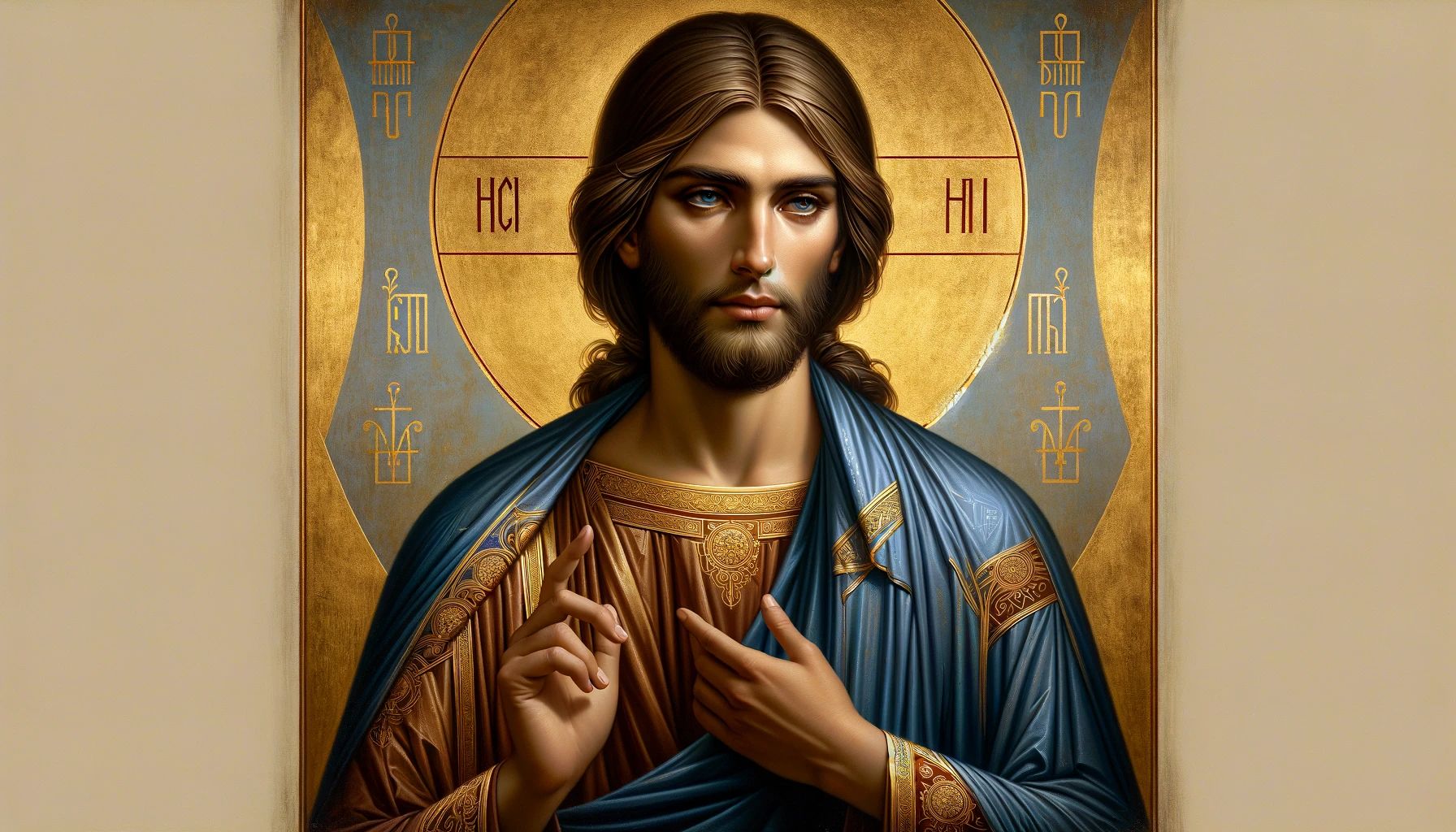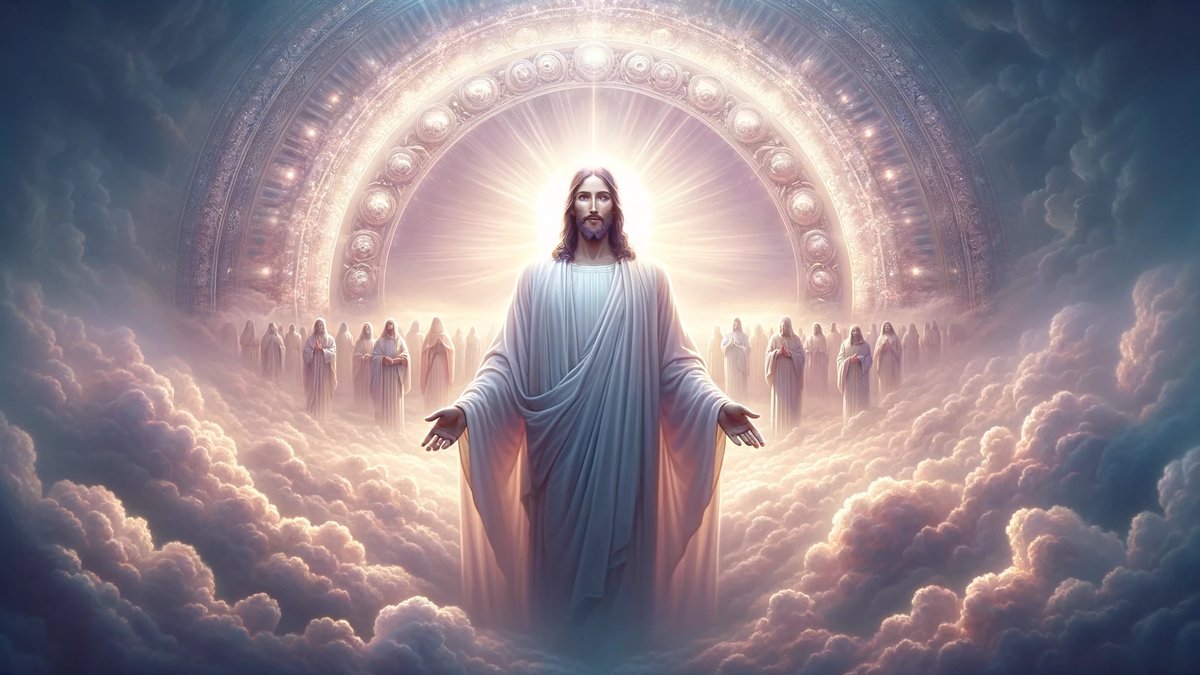Home>Christian Videos>Bible Stories>In “The Passion Of The Christ”, What Language Does Jesus Speak?


Bible Stories
In “The Passion Of The Christ”, What Language Does Jesus Speak?
Published: February 29, 2024
Ericka Andersen, an editor at Christian.net, expertly merges digital strategy with content creation, focusing on faith and societal issues. Her communication skills enhance the platform's engaging narratives, fostering meaningful dialogue on belief's impact on society.
Discover the language spoken by Jesus in "The Passion of the Christ" and explore more Bible stories. Uncover the historical and linguistic context of Jesus' speech.
(Many of the links in this article redirect to a specific reviewed product. Your purchase of these products through affiliate links helps to generate commission for Christian.net, at no extra cost. Learn more)
Table of Contents
Introduction
In "The Passion of the Christ", the language spoken by Jesus is a topic that has sparked much discussion and debate among scholars, theologians, and movie enthusiasts. The choice of language for Jesus in the film is significant as it shapes the portrayal of his character and the historical context in which he lived. The question of what language Jesus spoke in the film is a thought-provoking one that delves into the complexities of historical accuracy, linguistic diversity, and the artistic interpretation of biblical narratives. So, what language does Jesus speak in "The Passion of the Christ"? Let's explore this intriguing question in the context of the historical languages of Jesus' time and the cinematic representation of his story.
Read more: What Language Does Jesus Christ Speak
The Historical Context of Language in Jesus' Time
During the time of Jesus, the region of Judea was a melting pot of diverse languages and cultures. The primary language spoken by the Jewish people was Aramaic, a Semitic language closely related to Hebrew. Aramaic was the language of everyday life and would have been the language spoken by Jesus and his disciples in their interactions with the local community. However, the region was also under Roman rule, and as a result, Greek and Latin were also spoken, especially in administrative and official contexts. Greek, in particular, was widely used as a lingua franca throughout the Eastern Mediterranean, making it likely that Jesus and his followers had some knowledge of Greek due to its prevalence in the broader cultural and commercial sphere. Additionally, Hebrew, the language of the Jewish scriptures, would have been used in religious and scholarly contexts, particularly in the synagogues and during religious ceremonies. This linguistic diversity provides a rich backdrop for understanding the languages that would have been spoken and understood by Jesus and those around him.
In "The Passion of the Christ", the filmmakers faced the challenge of representing this linguistic diversity while also making the film accessible to a modern audience. The choice of language for the characters, particularly Jesus, reflects the historical and cultural milieu of the time while also catering to the expectations and understanding of contemporary viewers. The portrayal of language in the film is a crucial element in creating an authentic and immersive depiction of the world in which Jesus lived, while also conveying the emotional and spiritual depth of the biblical narrative.
The Languages Spoken in "The Passion of the Christ"
In "The Passion of the Christ," director Mel Gibson made a deliberate choice to authentically represent the linguistic diversity of the time while also engaging the audience with a relatable viewing experience. The film features a multilingual approach to dialogue, with characters speaking in historically appropriate languages. Aramaic, the language of everyday life in Judea, is predominantly used by the Jewish characters, including Jesus and his disciples. This decision aligns with historical scholarship on the linguistic context of the period and adds a layer of authenticity to the portrayal of Jesus and his followers. Additionally, Latin, the language of the Roman authorities, is employed in scenes involving Pontius Pilate and the Roman soldiers, reflecting the power dynamics and political tensions of the time. Furthermore, Hebrew is utilized in the religious and ceremonial settings, emphasizing the cultural and spiritual significance of the language within the Jewish community. The inclusion of these languages in the film not only enriches the historical and cultural dimensions of the narrative but also underscores the complexity of communication and identity in the ancient world. By incorporating a variety of languages, "The Passion of the Christ" captures the linguistic tapestry of Jesus' era and invites audiences to immerse themselves in a vivid and authentic cinematic representation of the past.
The Language of Jesus in Biblical Scholarship
The language spoken by Jesus has been a subject of scholarly inquiry and debate within the field of biblical studies. While the historical evidence points to Aramaic as the primary language of Jesus and his immediate community, the New Testament, which provides the most extensive accounts of Jesus' teachings and interactions, was written in Greek. This linguistic disjunction has prompted discussions about the language in which Jesus may have conveyed his messages and whether the Greek texts accurately reflect his original words.
Biblical scholars have grappled with the complexities of translation, transmission, and oral tradition in their efforts to understand the linguistic aspects of Jesus' ministry. The Gospels, as the foundational texts documenting Jesus' life and teachings, present a unique challenge in reconciling the language of Jesus' speech with the language of the written accounts. While some scholars argue for the likelihood of Jesus using Aramaic in his everyday conversations and religious discourses, others emphasize the influence of Greek-speaking communities and the subsequent translation of Jesus' words into Greek for wider dissemination.
Moreover, the study of ancient manuscripts and textual variants has provided insights into the multilingual and multicultural context of the early Christian world. The presence of Semitic idioms, Aramaic expressions, and linguistic nuances in the Greek texts has led scholars to consider the interplay between different languages and cultural influences in shaping the portrayal of Jesus' message. Additionally, the examination of non-canonical texts and extra-biblical sources has contributed to a nuanced understanding of the linguistic landscape in which Jesus operated, shedding light on the diverse linguistic practices and traditions of the time.
In the realm of biblical scholarship, the language of Jesus serves as a focal point for exploring the intersection of historical, linguistic, and theological dimensions. The quest to discern the linguistic patterns and linguistic choices of Jesus and his contemporaries involves a meticulous examination of textual evidence, cultural contexts, and interpretive frameworks. While the precise language spoken by Jesus may remain a matter of scholarly conjecture, the exploration of this topic underscores the intricate relationship between language, culture, and religious expression in the ancient world.
The Significance of Language in Depicting Jesus in Film
The portrayal of Jesus in film is a profound artistic endeavor that encompasses not only visual and narrative elements but also the use of language to convey the character's identity, cultural context, and spiritual significance. In the cinematic depiction of Jesus, the choice of language carries immense significance in shaping the audience's perception of his persona, the historical milieu in which he lived, and the authenticity of the storytelling. Language serves as a powerful tool for immersing viewers in the world of Jesus, evoking emotional resonance, and capturing the nuances of communication in ancient Judea.
The use of historically appropriate languages, such as Aramaic, Hebrew, and Latin, in films depicting the life of Jesus contributes to the authenticity and realism of the narrative. By incorporating these languages, filmmakers create a sense of historical accuracy and cultural fidelity, allowing audiences to experience the linguistic diversity of Jesus' time. This linguistic authenticity not only enriches the storytelling but also fosters a deeper appreciation for the complexities of communication and identity in the ancient world. Moreover, the inclusion of these languages underscores the multicultural and multilingual dynamics of the biblical narrative, reflecting the rich tapestry of human experience and expression.
Furthermore, the choice of language in depicting Jesus in film has theological and spiritual implications. The language spoken by Jesus and his followers carries profound religious significance, as it is intricately linked to the transmission of divine teachings, sacred rituals, and the expression of faith. By faithfully representing the linguistic context of Jesus' era, filmmakers honor the spiritual and cultural heritage embedded in the biblical narrative, inviting audiences to engage with the profound wisdom and timeless truths encapsulated in the language of Jesus' time. This linguistic authenticity not only deepens the audience's connection to the religious and spiritual dimensions of the story but also fosters a sense of reverence and awe for the profound impact of Jesus' message on human history and consciousness.
Moreover, the use of language in depicting Jesus in film serves as a bridge between the ancient world and contemporary audiences. By presenting the dialogue in historically appropriate languages, filmmakers create a sense of temporal and cultural immersion, transporting viewers to the world of Jesus while also inviting them to reflect on the enduring relevance of his teachings. This linguistic bridge between the past and the present facilitates a deeper understanding of the universal themes and timeless wisdom encapsulated in the biblical narrative, transcending linguistic and cultural barriers to resonate with audiences across diverse backgrounds and traditions.
In essence, the significance of language in depicting Jesus in film lies in its capacity to evoke historical authenticity, spiritual resonance, and cross-cultural relevance. The thoughtful and deliberate use of language enriches the cinematic portrayal of Jesus, inviting audiences to embark on a transformative journey through the linguistic, cultural, and spiritual landscape of his life and teachings. Through the power of language, filmmakers illuminate the enduring legacy of Jesus and the profound impact of his message, transcending the boundaries of time and language to inspire and uplift humanity.
Read more: What Is The Passion Of Jesus Christ
Conclusion
In conclusion, the question of what language Jesus speaks in "The Passion of the Christ" offers a captivating exploration of historical, linguistic, and cinematic dimensions. The film's portrayal of Jesus' language aligns with the linguistic diversity of his time, incorporating Aramaic, Hebrew, and Latin to create an immersive and authentic depiction of the ancient world. This multilingual approach enriches the storytelling, deepens the audience's engagement with the historical and cultural context, and honors the spiritual significance of language in conveying Jesus' message. Furthermore, the scholarly discourse on the language of Jesus provides valuable insights into the complexities of translation, transmission, and cultural dynamics in the ancient Mediterranean world. The significance of language in depicting Jesus in film extends beyond historical accuracy, encompassing theological, spiritual, and cross-cultural resonance. By embracing the linguistic tapestry of Jesus' era, "The Passion of the Christ" invites audiences to embark on a transformative journey through the language, culture, and timeless wisdom of Jesus' life and teachings.














